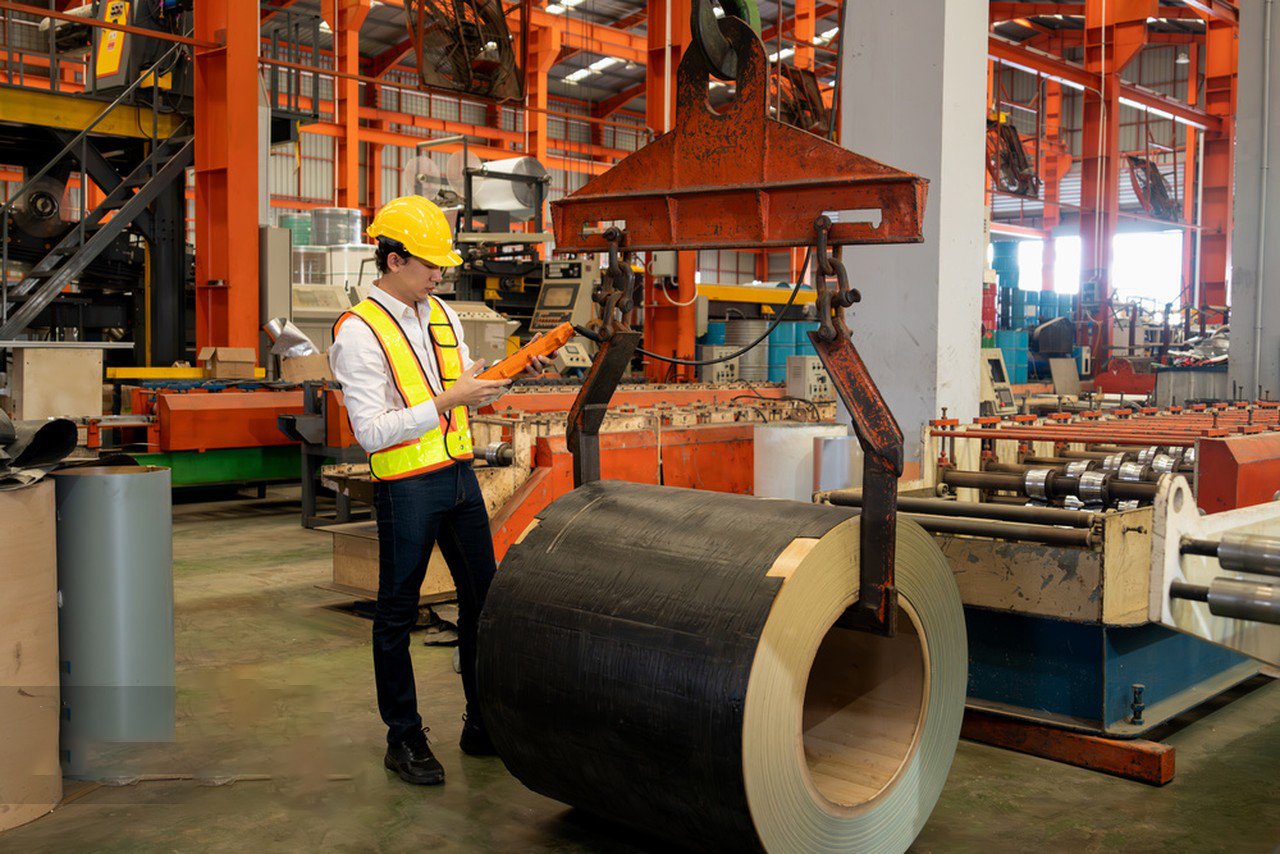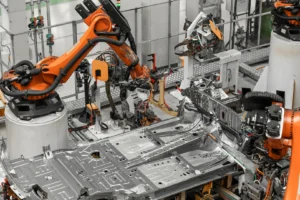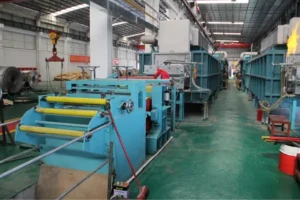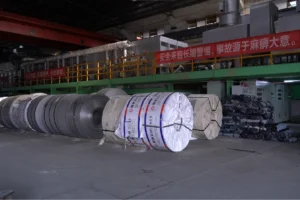Food-Grade Stainless Certifications: Buyer Checklist
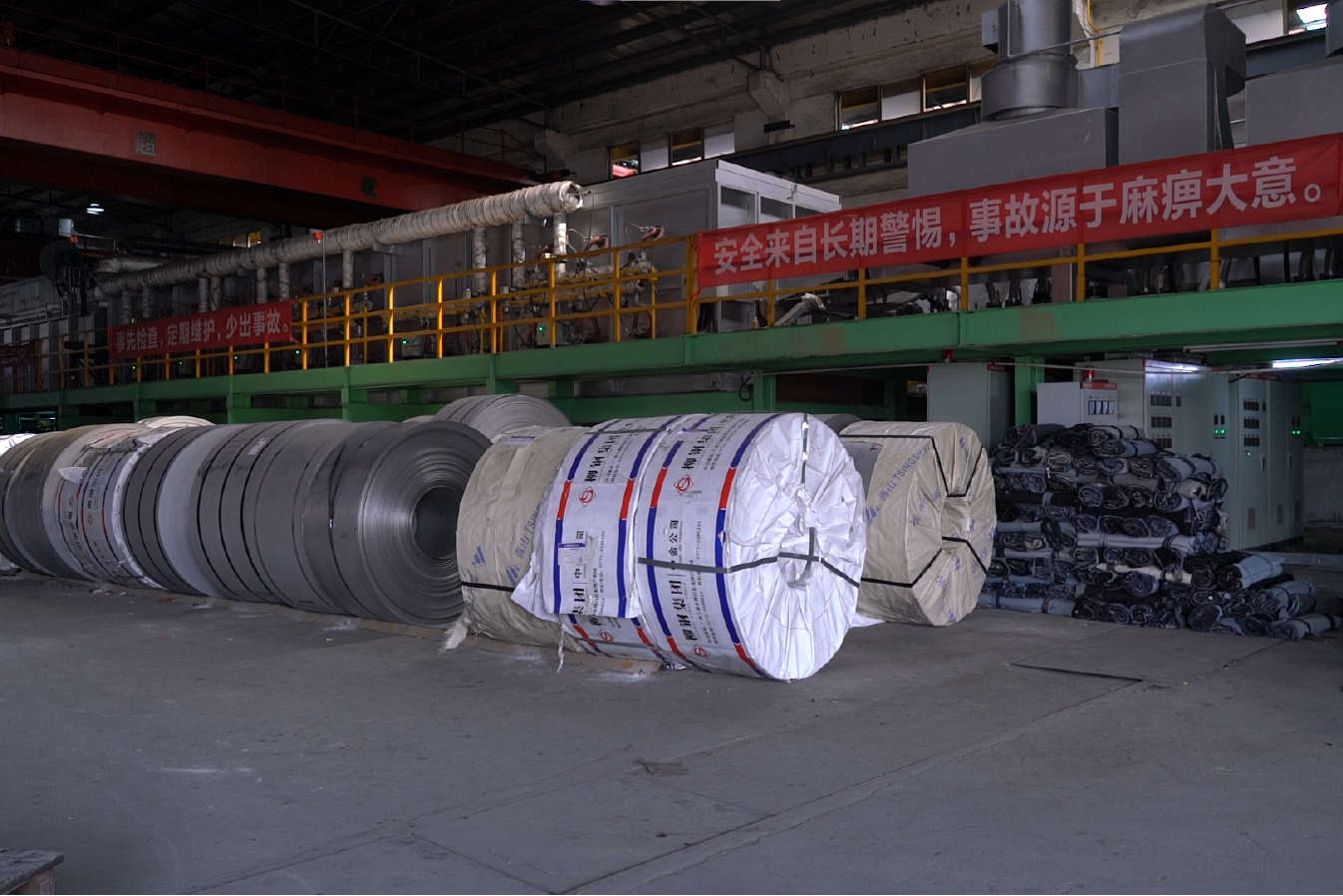
Are you worried about selecting stainless steel that might not be safe for food contact, leading to potential health hazards or regulatory nightmares? The challenge of navigating complex certifications can be overwhelming, but ensuring your materials are compliant is non-negotiable for safety and your brand's integrity.
Food-grade stainless steel certifications are official verifications that a specific stainless steel type and grade are safe for contact with food products. They are crucial for preventing contamination, ensuring public health, meeting legal requirements, and maintaining consumer trust in food processing and handling equipment.
Understanding these certifications isn't just a technicality; it's fundamental to consumer safety and your business's reputation. As Global Business Director at MFY, I've seen firsthand how crucial this knowledge is for our clients in manufacturing, engineering, and distribution. This guide will walk you through what you need to know.
The world of stainless steel, especially for food applications, is intricate. It’s not merely about the alloy’s composition but about a verified assurance of safety. Certifications provide1 this assurance, acting as a testament that the material won't leach harmful substances, corrode under specific food product interactions, or harbor bacteria due to poor surface characteristics. For instance, a dairy processor in India might require different assurances than a meat processing plant in Russia due to varying pH levels and cleaning protocols. At MFY, we emphasize that these certifications are more than just papers; they are a commitment to quality and safety, reflecting on your final product and brand. Neglecting this can lead to catastrophic failures, product recalls, and severe damage to consumer trust—a price no business can afford. This is why we, as a company deeply rooted in the stainless steel industry, champion the importance of thorough vetting.
What certifications are essential for food-grade stainless steel?
Feeling lost in the alphabet soup of stainless steel certifications, unsure which ones truly matter for your food-grade applications? This uncertainty can lead to selecting non-compliant materials, risking product safety and regulatory penalties. The solution is to clearly identify the key, internationally recognized certifications.
Essential certifications for food-grade stainless steel typically include NSF/ANSI 51 for food equipment materials, relevant ASTM standards (like A240 for plate/sheet/strip or A270 for sanitary tubing), and, for European markets, compliance with (EC) 1935/2004 framework regulation.
Knowing which certifications to look for is the first critical step in ensuring your stainless steel is truly fit for purpose in food contact applications. These standards are not arbitrary; they are developed based on extensive research into material safety, leachability, corrosion resistance, and cleanability – all vital factors in the food industry. For instance, a client of ours, a large-scale food processing equipment manufacturer in Southeast Asia, relies heavily on our guidance to ensure the stainless steel coils and sheets we supply meet the stringent requirements of their export markets, which often include a combination of these certifications. They understand that their customers, the end-users in food production, demand this level of assurance. Failing to provide materials with the correct certifications can halt production lines, lead to rejected shipments, or, worse, compromise food safety. At MFY, we see it as our responsibility to not only supply high-quality stainless steel but also to empower our clients with the knowledge to navigate these complex requirements, ensuring their projects are successful and their products are safe. This proactive approach helps our clients, from large engineering contractors to specialized equipment integrators, build efficient and compliant supply chains.
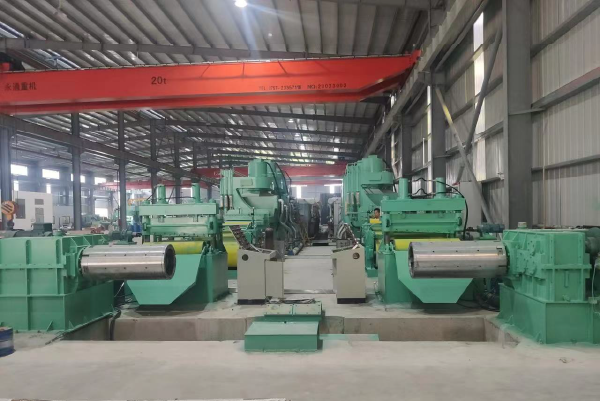
The landscape of food-grade stainless steel certifications is multifaceted, with different standards holding sway in various regions and for specific applications. Understanding the nuances of each essential certification is paramount for any buyer aiming for compliance and safety. It's not just about a stamp of approval; it’s about a documented assurance of material integrity. At MFY, we often guide our clients, whether they are manufacturing companies or engineering contractors, through this complex web. For example, a client in the Middle East looking to fabricate commercial kitchen equipment might need to demonstrate compliance with NSF standards for potential export to North America, while also adhering to local food safety guidelines. This necessitates a deep dive into what each certification truly signifies. We emphasize that simply seeing a "food-grade" label isn't enough; the backing of specific, verifiable certifications is what provides true confidence. This diligence protects not only the end-consumer but also the reputation and liability of every entity in the supply chain, from raw material providers like us to the final equipment user. The investment in understanding and verifying these certifications pays dividends in risk mitigation and market access.
NSF/ANSI 51: The Gold Standard for Food Equipment Materials
NSF/ANSI 51, "Food Equipment Materials," is arguably one of the most recognized standards globally, particularly in North America, for materials used in the construction of commercial food equipment. This standard establishes minimum public health and sanitation requirements for materials used in the manufacture of food equipment and related components. It covers a wide range_of materials, but for stainless steel, it ensures that the alloy is formulated and processed in a way that makes it safe for direct and indirect food contact. This means the material must be corrosion-resistant, smooth, cleanable, and not impart any undesirable taste, odor, or color to food, nor migrate harmful substances.
The testing requirements under NSF/ANSI 51 are rigorous. Stainless steel samples undergo evaluation for material safety, which includes assessing their chemical composition to ensure they meet the criteria for food-grade alloys like 304 or 316. They are also tested for their ability to resist corrosion from various food products and cleaning agents. Furthermore, the standard looks at the design and construction aspects if the material is part of a finished piece of equipment, ensuring it can be easily cleaned and sanitized, without harboring bacteria in crevices or joints. For instance, data from NSF International often highlights common failure points in non-certified equipment related to material degradation or poor cleanability, underscoring the standard's importance.
At MFY, we've frequently assisted clients, especially those exporting to or operating within North American markets, in sourcing stainless steel that meets NSF/ANSI 51. I recall a specific case with a rapidly growing beverage dispenser manufacturer in Southeast Asia. They were eyeing the US market and knew NSF certification was a key entry requirement. We worked closely with them to supply certified 316 stainless steel sheets and pipes with the specific surface finish (a No. 4 finish in their case) that would facilitate their equipment's overall NSF certification. We provided all necessary Mill Test Certificates (MTCs) and traceability documentation, which are crucial for the NSF evaluation process. Their subsequent success in achieving NSF listing for their dispensers, partly due to the compliant materials, allowed them to tap into a lucrative market. Market research consistently shows a preference, sometimes a mandate, for NSF-certified equipment in commercial food service, with some studies indicating a market share premium for such certified goods.
ASTM Standards: Ensuring Material Composition and Performance
ASTM International, formerly known as the American Society for Testing and Materials, develops and publishes voluntary consensus technical standards for a wide range_of materials, products, systems, and services. For food-grade stainless steel, several ASTM standards are critical in defining the material's chemical composition, mechanical properties, and, in some cases, specific requirements for sanitary applications. For example, ASTM A240/A240M covers chromium and chromium-nickel stainless steel plate, sheet, and strip for pressure vessels and for general applications, which includes many food-grade uses. Common food-grade alloys like Type 3042 (UNS S30400) and Type 316 (UNS S31600) and their low-carbon variants (304L, 316L) are specified under this standard. Another key standard is ASTM A270/A270M, which specifies seamless and welded austenitic and ferritic/austenitic stainless steel sanitary tubing, critical for dairy, food, and beverage processing lines where hygiene is paramount.
The significance of these ASTM standards lies in their precision. They dictate the exact percentages of elements like chromium, nickel, molybdenum, and carbon, which in turn determine the steel's corrosion resistance, weldability, and formability. For food-grade applications, this is vital. For example, the higher molybdenum content in Type 316/316L stainless steel (as per ASTM A240) provides superior resistance to chloride corrosion, making it essential for applications involving brines, acidic food products, or aggressive cleaning agents. Using a grade not suited for the specific food environment, say a standard 304 where 316L is needed, can lead to pitting corrosion and contamination. Studies comparing corrosion rates show that 316L can outperform 304 by a significant margin in environments with more than 200 ppm chlorides.
We had an interesting project with an Indian dairy cooperative that was upgrading its pasteurization units. They needed a large quantity of stainless steel pipes that could withstand frequent thermal cycling and the mildly corrosive nature of milk, while also adhering to strict hygiene standards. Their engineering team specified ASTM A270-compliant 316L stainless steel pipes with a specific internal surface roughness (Ra value). MFY was able to supply these pipes, complete with comprehensive MTCs confirming adherence to ASTM A270 chemical and mechanical specifications, as well as surface finish certifications. The client later reported a noticeable reduction in biofilm formation and cleaning times compared to their older, less rigorously specified piping. Industry data suggests that improper material selection, often due to a lack of adherence to relevant ASTM standards, is a leading cause of premature equipment failure in food processing, sometimes reducing equipment lifespan by up to 30-40% in aggressive environments. Our role was to ensure they got exactly what the standard, and their application, demanded.
EU Regulation (EC) 1935/2004: European Market Access
For companies looking to supply stainless steel or stainless steel equipment to the European Union market, compliance with Regulation (EC) No 1935/20043 is non-negotiable. This framework regulation applies to all food contact materials (FCMs) and articles intended to come into contact, directly or indirectly, with food. Its primary objective is to ensure a high level of protection for human health and the interests of consumers. Article 3 of this regulation lays down the general requirement that FCMs must be manufactured in accordance with Good Manufacturing Practice (GMP) so that they do not transfer their constituents to food in quantities large enough to endanger human health, bring about an unacceptable change in the composition of the food, or deteriorate its organoleptic characteristics (taste, aroma, appearance).
A crucial aspect of (EC) 1935/2004 is the requirement for a written Declaration of Compliance (DoC). For stainless steel intended for food contact, the DoC must confirm that the material complies with the relevant EU and national provisions. This declaration facilitates the traceability of materials and helps enforcement authorities verify compliance. While there isn't a specific EU-wide harmonized measure for metals and alloys like there is for plastics, general safety requirements under Article 3 apply. Member states may also have their own national legislations or guidelines (e.g., Germany's LFGB, France's DGCCRF guidelines). Therefore, suppliers like MFY must be aware of these nuances. Traceability, ensuring that materials can be traced back to their origin and processing steps, is another cornerstone of this regulation, enabling swift action in case of safety issues.
We recently supported a valued client, a food processing machinery exporter based in the Middle East, who was securing a large contract to supply equipment to a food manufacturer in Germany. A key contractual obligation was to prove that all stainless steel components in contact with food met (EC) 1935/2004. MFY supplied them with 316L stainless steel coils and sheets, accompanied by detailed MTCs and a carefully prepared DoC. This DoC explicitly stated compliance with Article 3 of (EC) 1935/2004 and referenced the relevant EN standards for stainless steel (e.g., EN 10088 for chemical composition). We also ensured robust batch traceability from our mill to their production facility. This comprehensive documentation package was instrumental in our client satisfying their German customer and successfully delivering the project. The European Food Safety Authority (EFSA) plays a key role in providing scientific advice for such regulations, and adherence is strictly monitored by national authorities. Non-compliance can result in products being barred from the EU market, hefty fines, and significant reputational damage. For instance, market surveillance data from RAPEX (the EU's rapid alert system for dangerous non-food products) occasionally flags food contact articles for non-compliance, reinforcing the seriousness of these regulations.
| Feature | NSF/ANSI 51 | ASTM Standards (e.g., A240, A270) | (EC) 1935/2004 |
|---|---|---|---|
| Primary Focus | Safety & sanitation of food equipment materials | Material composition & performance properties | General safety of all food contact materials (FCMs) |
| Geographic Scope | Primarily North America, recognized globally | International, widely adopted | European Union |
| Key Requirement | Testing for leachability, cleanability, safety | Specific chemical & mechanical properties | Declaration of Compliance (DoC), GMP, traceability |
| Output | NSF Listing/Certification | MTC confirming grade & standard compliance | DoC, supporting documentation |
| Enforcement | NSF International, regulatory bodies | Industry adoption, contractual specification | EU Member State authorities |
NSF/ANSI 51 is crucial for food equipmentTrue
NSF/ANSI 51 is a globally recognized standard that ensures stainless steel is safe for food contact by testing for corrosion resistance and cleanability.
Any stainless steel is food-gradeFalse
Only specific grades like 304 and 316 with proper certifications are considered food-grade, as they meet strict safety and performance criteria.
Why are these certifications crucial for food safety and compliance?
Are you tempted to overlook the detailed requirements of stainless steel certifications, perhaps viewing them as mere bureaucratic hurdles? This mindset can lead to severe consequences, including jeopardizing consumer health, facing legal actions, and damaging your brand's reputation. Understanding their critical role is paramount.
These certifications are crucial because they provide verifiable assurance that stainless steel will not contaminate food, thereby protecting public health. They also ensure businesses meet stringent regulatory requirements , avoiding legal penalties, product recalls, and maintaining market access.
The importance of these certifications cannot be overstated; they form the bedrock of trust between consumers, food producers, and material suppliers. As a company, MFY has built its reputation on providing stainless steel that not only meets but often exceeds these critical standards. For our clients, whether they are manufacturing food processing equipment or constructing food-safe facilities, these certifications are their guarantee that the materials they use are safe, compliant, and fit for purpose. Imagine a scenario where a food manufacturer unknowingly uses non-certified stainless steel that leaches harmful metals into their products; the fallout could be devastating, leading to widespread illness, costly recalls, and irreparable brand damage. Certifications act as a preventative measure, a rigorous checkpoint ensuring that the material is inert, durable, and cleanable – essential qualities for any surface that comes into contact with food. This diligence translates directly into safer food products, consumer confidence, and a more robust, trustworthy food industry supply chain, which is a core part of our mission at MFY.
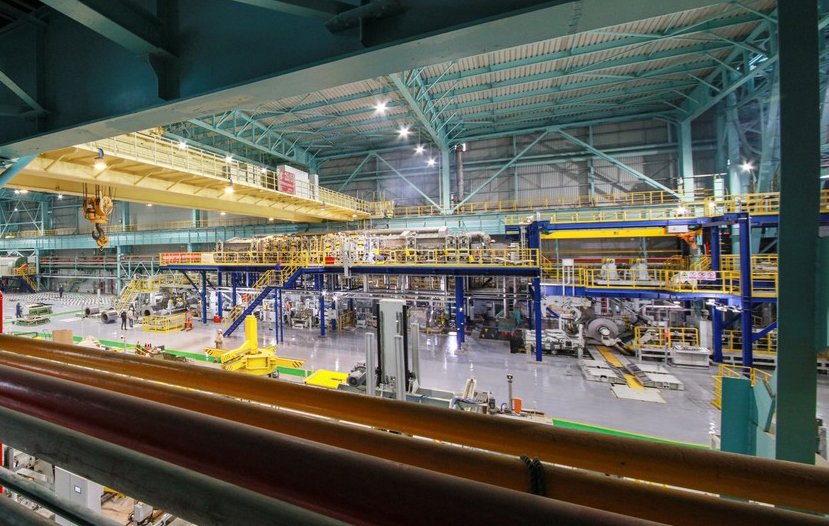
The criticality of food-grade certifications for stainless steel extends far beyond a simple checkbox on a procurement form; it's a fundamental pillar supporting the entire food industry's safety and integrity. When we at MFY supply stainless steel coils, sheets, or pipes4 for food-related applications, we understand that we are part of a larger responsibility chain. These certifications are not just about meeting a standard; they are about upholding a promise of safety to the end consumer. For a manufacturing company producing dairy equipment, or an engineering contractor building a large-scale food processing plant, the choice of material directly impacts the safety and quality of the food that will eventually be produced. Non-certified or improperly certified materials can introduce a host_of risks, from chemical contamination due to leaching of metallic ions, to microbiological hazards if the material surface is not suitably finished for effective cleaning and sanitation. The implications are enormous, touching upon public health, regulatory compliance, operational efficiency, and ultimately, brand value. Our clients in demanding markets like India and Southeast Asia, where food safety regulations are increasingly stringent, rely on MFY's commitment to providing fully certified materials. This trust is built on our consistent delivery of stainless steel that meets globally recognized standards, thereby enabling our clients to operate with confidence and serve their markets responsibly.
Preventing Food Contamination and Ensuring Public Health
The primary reason food-grade certifications are indispensable is their role in preventing food contamination. Stainless steel, by its nature, is chosen for its corrosion resistance and inertness. However, not all stainless steel is created equal, and without certification, there's no guarantee that a particular batch will perform as expected in a food environment. Non-certified materials might contain impurities or have compositions that make them susceptible to leaching harmful elements like chromium, nickel, or manganese into food, especially when exposed to acidic, salty, or high-temperature conditions. Even minute quantities of these leached substances can pose long-term health risks to consumers. Certifications like NSF/ANSI 51 specifically test for such migration to ensure levels remain well within safe limits.
Furthermore, the physical characteristics of the stainless steel surface, often dictated by standards referenced in certifications (like ASTM A270 for sanitary tubing), play a crucial role in hygiene. A properly finished, smooth, and non-porous surface, as verified by certification, is easier to clean and less likely to harbor bacteria or form biofilms. Biofilms are communities of microorganisms that can adhere to surfaces and are notoriously difficult to remove, becoming a persistent source of contamination. Industry studies have shown a direct correlation between surface roughness (Ra value) and bacterial adhesion; smoother surfaces, often specified in food-grade standards (e.g., Ra < 0.8 µm), significantly reduce this risk. Failure to use certified materials with appropriate surface finishes can lead to persistent hygiene issues, cross-contamination, and ultimately, foodborne illnesses.
I remember a challenging situation with a new client, a mid-sized fruit juice producer in Southeast Asia. They were experiencing recurrent issues with metallic taste complaints and shorter-than-expected shelf life for some of their bottled juices. An investigation revealed that the stainless steel tanks and piping they had sourced from a previous, unverified supplier were of a lower grade than specified and likely not certified for their acidic product. We at MFY worked with them to replace the problematic components with certified 316L stainless steel pipes and sheets, which are better suited for acidic food products. Post-replacement, they reported a complete elimination of the metallic taste issues and an improvement in product stability. Data from organizations like the WHO and CDC frequently link foodborne disease outbreaks to contaminated equipment, emphasizing that material choice and certification are critical control points. This client's experience was a stark reminder of how material integrity directly impacts public health and product quality.
Meeting Regulatory Requirements and Avoiding Legal Penalties
Globally, food safety authorities like the U.S. Food and Drug Administration (FDA), the European Food Safety Authority (EFSA), and national bodies in countries like India5 and across Southeast Asia, have established stringent regulations for materials that come into contact with food. These regulations are designed to protect consumers, and certifications are a primary means by which companies demonstrate compliance. For stainless steel, these regulations often defer to or incorporate standards like NSF, ASTM, or EU framework regulations. For instance, the FDA's Food Safety Modernization Act (FSMA) places significant emphasis on preventative controls, and using certified food-grade materials is a key preventative measure.
Failure to comply with these regulatory requirements can lead to severe consequences. These can range from warnings and product recalls to hefty fines, facility- GÇ_closures, and even criminal charges in cases of gross negligence. The cost of a product recall alone can be astronomical, encompassing not just the logistical expenses but also the damage to brand reputation and loss of consumer trust, which can take years to rebuild. For companies exporting their products or equipment, non-compliance can mean rejected shipments at the port of entry, effectively barring them from lucrative international markets. Certifications serve as auditable proof that a company has exercised due diligence in selecting safe materials.
We once assisted an engineering and construction contractor client in Russia who was in the final stages of commissioning a new fish processing plant. A last-minute audit by local food safety authorities raised questions about the certification of some stainless steel work surfaces and conveyor parts that had been sourced from a local supplier of uncertain credentials. The project faced potential delays and significant penalties. MFY was able to expedite a shipment of certified 304 and 316L stainless steel sheets with full documentation, enabling the client to replace the questionable components quickly and satisfy the auditors. This intervention saved them from what could have been a costly setback. Industry reports on compliance costs indicate that the investment in certified materials is minimal compared to the potential financial impact of fines and recalls, which can run into millions of dollars depending on the scale of the issue. For example, a major food recall can cost a company an average of $10 million in direct costs, not including brand damage and lost sales, according to a joint industry study by the Food Marketing Institute and the Grocery Manufacturers Association.
Enhancing Brand Reputation and Consumer Trust
In today's market, consumers are more informed and conscientious about food safety than ever before. The use of certified food-grade materials is not just a regulatory necessity but also a powerful statement about a brand's commitment to quality, safety, and transparency. Companies that can confidently state their products are made with or processed using certified food-grade stainless steel can leverage this as a competitive advantage. It signals to consumers, B2B customers, and regulatory bodies alike that the company prioritizes safety and adheres to the highest standards. This can significantly enhance brand reputation and build lasting consumer trust.
Transparency in the supply chain is increasingly valued. Being able to trace materials back to their source and provide documentation of their food-grade certification contributes to this transparency. This is particularly important for MFY's target clients, such as manufacturing companies producing food equipment or distributors supplying materials to the food industry. When they can pass on the assurance of certified quality to their own customers, it strengthens their market position. Conversely, a food safety incident linked to substandard materials can erode consumer trust almost instantaneously, with long-lasting negative effects on sales and brand loyalty. Social media can amplify such incidents, making reputational recovery even more challenging.
Many of MFY's clients, particularly equipment integrators and manufacturers who sell finished products, actively use the "Made with Certified Food-Grade Stainless Steel" claim in their marketing materials. We've seen this directly contribute to their ability to secure contracts, especially with larger, quality-conscious food and beverage corporations. For example, a client in the Middle East who manufactures bespoke bakery equipment found that highlighting their use of MFY-supplied, certified stainless steel helped them differentiate from competitors using cheaper, unverified materials. They reported a 15% increase in inquiries from premium clients after they started emphasizing this aspect. Consumer behavior studies consistently show that safety assurances and quality certifications can significantly influence purchasing decisions, with a notable percentage of consumers willing to pay a premium for products they perceive as safer. By ensuring our stainless steel meets these critical certifications, MFY helps empower our clients to build that vital trust with their end-users.
| Aspect Affected by Certification | Risk of Non-Certified Steel | Benefit of Certified Steel |
|---|---|---|
| Food Safety | Potential leaching of harmful metals, microbial contamination | Prevents contamination, ensures material inertness and cleanability |
| Public Health | Risk of foodborne illnesses, long-term health effects | Protects consumer health by ensuring safe food contact surfaces |
| Regulatory Compliance | Fines, recalls, facility closure, legal action, market denial | Meets legal obligations, facilitates market access, avoids penalties |
| Operational Efficiency | Increased cleaning times, premature equipment failure, corrosion | Easier sanitation, longer equipment lifespan, reliable performance |
| Brand Reputation | Damage to trust, negative publicity, loss of market share | Enhanced brand image, increased consumer confidence, competitive edge |
| Financial Impact | High costs of recalls, repairs, legal fees, lost sales | Lower long-term costs, reduced risk, supports sustainable business growth |
Certifications prevent food contaminationTrue
Food-grade certifications verify that stainless steel won't leach harmful metals into food, protecting public health.
Any stainless steel is food-safeFalse
Only certified food-grade stainless steel meets the strict composition and surface finish requirements for safe food contact.
How can companies ensure their stainless steel meets food-grade standards?
Feeling unsure how to definitively verify that the stainless steel you're sourcing truly meets food-grade standards? This uncertainty can expose your business to significant risks if non-compliant materials slip through. The solution lies in implementing a robust verification process for every batch.
Companies can ensure stainless steel meets food-grade standards by demanding and scrutinizing Mill Test Certificates (MTCs), thoroughly vetting suppliers, understanding specific application needs for grade and finish, and, where necessary, conducting or requiring third-party testing and verification.
Ensuring compliance is a multi-step process that requires diligence and attention to detail. It's not enough to simply take a supplier's word for it. As a seasoned professional in the stainless steel industry with MFY, I've seen countless instances where a lack of thorough verification has led to problems down the line. The first line of defense is always documentation. Requesting and carefully reviewing MTCs is crucial, as these documents provide the chemical composition and mechanical properties of the steel, directly linking it back to the specific heat number and the standards it claims to meet. Beyond paperwork, understanding the reputation and quality control processes of your supplier is vital. At MFY, we pride ourselves on our transparent processes and our fully integrated supply chain, which allows us to provide a high degree of assurance. For our clients, whether they are large manufacturing firms or specialized engineering contractors, we often act as a partner in this verification process, helping them interpret specifications and confirm compliance for their unique food-contact applications. This collaborative approach minimizes risk and ensures that the materials procured are perfectly suited and certified for their intended use.
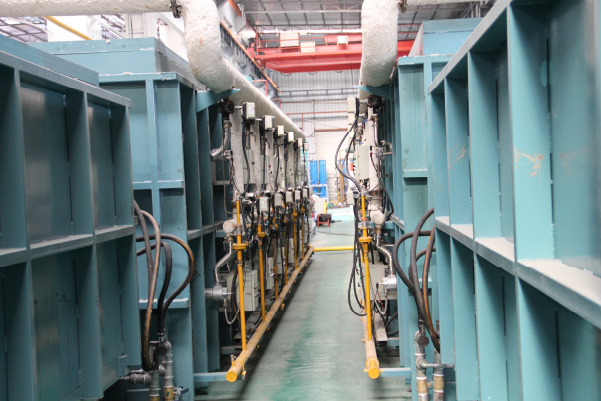
Securing stainless steel that genuinely meets food-grade standards is a critical responsibility for any company involved in the food supply chain, from equipment manufacturers to food processors. It's a proactive endeavor that demands more than just a cursory check. At MFY, we consistently advise our clients – be they manufacturing companies, engineering contractors, or distributors – that a multi-layered approach to verification is the most effective strategy. This isn't about distrust; it's about due diligence and safeguarding the integrity of their products and operations. The process begins long before an order is placed, with a clear understanding of the specific food-grade requirements pertinent to the application – considering the type of food, processing conditions (temperature, pH, cleaning agents), and regulatory environment of the end market. This understanding then informs the specification of the stainless steel grade, surface finish, and necessary certifications. For instance, a client in India manufacturing dairy processing equipment will have different surface finish requirements (often needing highly polished surfaces to prevent bacterial adhesion) compared to a client in the Middle East fabricating general food preparation tables. MFY's role often extends to helping decipher these specific needs and matching them with the appropriate stainless steel products and certifications from our extensive inventory. We believe in empowering our clients with knowledge, ensuring they are not just buying steel, but a guaranteed solution for their food-grade applications.
Demanding and Scrutinizing Mill Test Certificates (MTCs)
The Mill Test Certificate (MTC)6, sometimes called a Certified Mill Test Report (CMTR) or Mill Test Report (MTR), is a quality assurance document provided by the steel manufacturer that certifies a material's chemical and physical properties. For food-grade stainless steel, the MTC is a cornerstone of verification. It should unequivocally state the specific grade of stainless steel (e.g., 304L, 316L), the heat number (a unique identifier for the batch of steel from which the product was made), and detailed results of chemical analysis, showing the percentages of key elements like Chromium, Nickel, Molybdenum, Carbon, etc. It should also list the mechanical properties such as tensile strength, yield strength, and elongation, and crucially, reference the specific standards it conforms to (e.g., ASTM A240, EN 10088-2).
Scrutinizing an MTC involves more than just checking for its presence. Buyers should verify that the chemical composition listed matches the requirements for the specified food-grade stainless steel type. For example, for 316L, one would look for molybdenum content typically in the 2-3% range and low carbon (usually <0.03%). It's also vital to ensure the MTC is traceable to the actual material received, often through matching the heat number on the certificate with markings on the steel itself (coils, sheets, or pipes often have this stenciled or etched). Buyers should be wary of generic or incomplete MTCs. Red flags include missing heat numbers, vague standard conformance claims, or chemical/mechanical properties that are suspiciously "perfect" or identical across multiple MTCs from different batches. Reputable suppliers like MFY ensure that MTCs are comprehensive, authentic, and directly linked to the specific material supplied.
As part of my role at MFY, I often guide new clients through this MTC verification process. I recall working with a burgeoning food equipment manufacturer in India who was new to sourcing certified stainless steel sheets directly. They were understandably cautious. I personally walked their procurement team through several MTCs from our stock, explaining each section, how to cross-reference the heat numbers with our inventory tracking, and what specific elemental percentages to look for to confirm it was genuine 316L suitable for their application involving mildly acidic food products. We even showed them how our internal QA checks verify these MTCs upon receipt from our partner mills. This hands-on approach built their confidence and established a transparent, trust-based relationship. This level of diligence in MTC scrutiny is a non-negotiable step in ensuring food-grade compliance.
Supplier Due Diligence and Audits
Beyond documentation, the credibility and practices of your stainless steel supplier are paramount. Choosing a reputable supplier with a proven track record in providing certified food-grade materials significantly reduces risk. Supplier due diligence should involve investigating their quality management systems (e.g., ISO 9001 certification), their experience in serving the food industry, client testimonials or references, and their understanding of food-grade requirements and certifications. It’s important to ascertain if the supplier has robust internal processes for handling, storing, and documenting certified materials to prevent mix-ups or contamination.
For critical supplies or long-term partnerships, conducting supplier audits can be highly beneficial. An audit might involve visiting the supplier's facilities to observe their quality control procedures, inventory management (especially segregation of different grades and certified materials), documentation practices, and traceability systems from raw material intake to dispatch. Key questions to ask during an audit include: How do you verify the authenticity of MTCs from your mills? What is your procedure if a non-conformance is found? How do you ensure traceability of specific heat numbers throughout your processing (if any) and to the final customer? A supplier who is transparent and can demonstrate strong controls offers greater assurance.
MFY prides itself on its fully integrated supply chain and stringent internal quality controls. We operate with ISO 9001 certification and have dedicated QA/QC teams that not only inspect incoming materials from our trusted mill partners but also oversee our own cold-rolled processing and tube manufacturing operations. We maintain meticulous records and traceability for all our stainless steel, especially for sensitive applications like food-grade. For many of our clients, particularly larger engineering contractors or manufacturers with their own rigorous QA systems, our robust internal processes provide a high level of confidence. We essentially extend our quality assurance umbrella to them. Industry data on supply chain vulnerabilities often points to lapses in supplier verification as a key risk factor; a study by a global consultancy found that over 60% of supply chain disruptions could be mitigated by better supplier due diligence. We aim to be a partner that mitigates such risks for our clients from the outset.
Third-Party Testing and Verification
In certain situations, relying solely on supplier documentation and audits may not be sufficient, and third-party testing and verification can provide an additional layer of assurance. This might be prudent for particularly high-risk food applications, when dealing with a new or unproven supplier, if there are any doubts about the authenticity of MTCs, or if a project has extremely stringent contractual requirements for independent verification. Third-party laboratories can perform a range_of tests to confirm the material's identity and suitability.
Common third-party tests include Positive Material Identification (PMI), which uses X-ray fluorescence (XRF) or optical emission spectrometry (OES) to quickly verify the alloy composition of the supplied stainless steel on-site or in a lab. This can confirm if the grade received (e.g., 316L) matches what was ordered and certified on the MTC. For specific food-contact concerns, more specialized tests might be conducted, such as leachability tests simulating contact with particular food types or corrosion resistance tests under conditions mimicking the actual processing environment. While third-party testing adds to the cost and time, its value in mitigating potentially far greater risks (product recall, health hazards, regulatory non-compliance) can be substantial in critical scenarios.
We had a case where a distributor client, aiming to supply stainless steel coils to several high-profile food processing projects in the Middle East, decided to engage a third-party inspection agency for a large MFY shipment. While they had full confidence in MFY's quality and documentation, they wanted an independent report to provide an extra level of assurance to their end-customers, who were particularly risk-averse. MFY fully supported this initiative, providing access for sampling and facilitating the inspection process. The third-party PMI tests confirmed our materials were 100% compliant with the specified 316L grade and MTCs. While this added a modest cost (typically PMI testing can range from a few hundred to a couple of thousand dollars depending on the scope), our client felt it was a worthwhile investment to secure the contracts and reinforce their reputation for quality. This demonstrates a best-practice approach, especially when stakes are high.
| Verification Step | Key Actions | MFY's Approach/Support |
|---|---|---|
| Understand Application Needs | Define food type, process, temperature, cleaning, regulatory zone for grade, finish, and certs. | Expert consultation to help clients specify correct SS grade, finish, and certifications for their application. |
| Demand & Scrutinize MTCs | Verify heat number, chemical composition, mechanical properties, standards conformance. Check authenticity. | Provide comprehensive, authentic MTCs; guide clients in MTC interpretation and verification. |
| Supplier Due Diligence | Investigate supplier reputation, QMS (ISO 9001), food-grade experience, traceability. | Transparent operations, ISO 9001 certified, integrated supply chain, strong track record in food-grade SS. |
| Consider Supplier Audits | Assess supplier's QC, inventory management, documentation handling. | Welcome client audits; demonstrate robust internal QA/QC, processing, and traceability systems. |
| Material Inspection on Receipt | Visual check, marking verification (heat no.), dimensional checks. | Ensure clear marking and proper packaging; support client's incoming inspection processes. |
| Third-Party Testing (If Needed) | Engage independent lab for PMI, leachability, or corrosion tests for critical applications/new suppliers. | Cooperate fully with any third-party inspection/testing requested by clients; confident in material quality. |
| Maintain Records | Keep all MTCs, DoCs, inspection reports, and supplier communications for traceability and compliance. | Assist clients by providing organized documentation; our digital systems can support client record-keeping needs. |
MTCs verify food-grade complianceTrue
Mill Test Certificates provide documented proof of a stainless steel's chemical composition and mechanical properties, confirming its suitability for food-grade applications.
Supplier claims alone are sufficientFalse
Relying solely on a supplier's verbal assurances without documentation or verification processes is inadequate for ensuring food-grade compliance.
What common pitfalls should buyers avoid when selecting food-grade stainless?
Are you focused heavily on the initial price when sourcing food-grade stainless steel, potentially overlooking other critical factors? This common approach can lead to costly mistakes, compromised safety, and operational headaches down the line. Awareness of these pitfalls is key to making sound purchasing decisions.
Common pitfalls include prioritizing cost over compliance and suitability, misunderstanding the differences between stainless steel grades (e.g., 304 vs. 316L) for specific food environments, neglecting the importance of appropriate surface finish for hygiene, and overlooking the critical need for complete documentation and traceability.
Navigating the selection of food-grade stainless steel requires a discerning eye and a comprehensive understanding that goes beyond just the base material cost. As Global Business Director at MFY, I've seen many buyers, especially those new to the intricacies of food-grade applications, fall into traps that could have been easily avoided with a bit more knowledge or guidance. For example, opting for a cheaper grade of stainless steel without fully considering the corrosiveness of the food product it will contact, or the harshness of cleaning chemicals, is a frequent misstep. This can lead to premature corrosion, contamination risks, and the need for costly early replacement. Similarly, an unsuitable surface finish might look acceptable initially but can become a breeding ground for bacteria, leading to hygiene failures. At MFY, we actively work with our clients—from equipment integrators to large manufacturing companies—to help them sidestep these common errors by providing clear information and tailored advice based on their specific application needs and the operational environment.
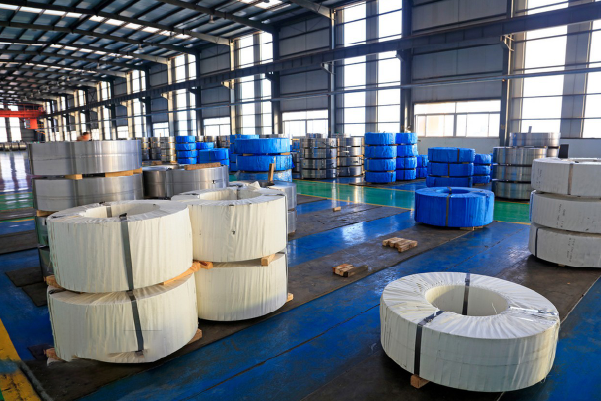
Avoiding common pitfalls in the selection of food-grade stainless steel is crucial for ensuring the longevity of equipment, the safety of food products, and overall operational success. It’s about making informed decisions that balance cost, performance, and compliance. From my vantage point at MFY, serving a diverse clientele across India, Southeast Asia, the Middle East, and Russia, I've observed recurring challenges that buyers face. These often stem from an incomplete understanding of how different stainless steel characteristics interact with food processing environments. For instance, a distributor might be pressured by their client for the lowest price, leading them to source material that technically meets a grade specification but lacks the necessary certifications or surface quality for demanding food applications. Or an engineering contractor might underestimate the impact of chloride levels in process water, leading to the specification of an inadequate stainless steel grade. Our approach at MFY is not just to sell steel, but to provide a consultative service, helping buyers understand these nuances. We believe that an educated buyer is our best customer, because they appreciate the value of quality, certification, and appropriate material selection, leading to successful projects and long-term partnerships. This proactive guidance is a core part of our commitment to supporting the global expansion of China’s stainless steel supply chain responsibly.
The "Cheapest is Best" Fallacy
One of the most common and damaging pitfalls is prioritizing the initial purchase price above all else. While budget constraints are a reality for every business, opting for the cheapest available stainless steel without rigorous verification of its grade, quality, and certifications for food contact can be a costly mistake in the long run. Lower-priced materials may come from less reputable sources, lack proper MTCs, or be of a grade or finish that is unsuitable for the intended food application. This can lead to a cascade of problems, including premature corrosion, material failure, difficulties in cleaning and sanitation, and, most critically, food contamination.
The hidden costs associated with low-quality or non-compliant stainless steel can far outweigh any initial savings. These costs include increased maintenance and repair expenses, production downtime due to equipment failure, the expense of premature replacement, and the potentially catastrophic costs of product recalls, legal liabilities, and reputational damage if food safety is compromised. For example, a non-certified stainless steel tank that corrodes and leaches metallic ions into a food product might necessitate discarding entire batches of product, followed by an expensive investigation and replacement of the faulty equipment. The true cost of stainless steel should always be evaluated over its entire lifecycle in the specific application.
I vividly recall a situation with an equipment integrator client who was building a series of brine tanks for a fish processing facility. They initially opted for a lower-cost stainless steel sourced from a local trader, which was claimed to be "food grade" but lacked robust certification and detailed MTCs. Within six months of operation, severe pitting corrosion was observed due to the high salinity environment. MFY was then approached, and we supplied certified 316L stainless steel sheets, which have superior chloride corrosion resistance. Although the initial outlay for MFY’s 316L was about 20-25% higher than their original purchase, the client avoided ongoing product contamination risks, frequent repairs, and the imminent complete failure of the initial tanks. Lifecycle cost analysis data for stainless steel in corrosive environments clearly demonstrates that selecting the appropriate, albeit sometimes more expensive, grade and certified material leads to significantly lower total cost of ownership. For instance, studies have shown that using 316L instead of 304 in environments with chloride levels exceeding 200 ppm7 can extend service life by factors of 2 to 5 times.
Misinterpreting Stainless Steel Grades and Their Applications
Another frequent pitfall is a misunderstanding or misapplication of different stainless steel grades for food contact. The most common food-grade stainless steels are from the austenitic family, primarily Type 304 (often called 18/8 due to its ~18% chromium and ~8% nickel content) and Type 316 (which includes ~2-3% molybdenum for enhanced corrosion resistance). While both are "food-grade," they are not universally interchangeable. A common mistake is using Type 304 in applications where the more corrosion-resistant Type 316 or 316L (low carbon version) is necessary.
Type 304 stainless steel is generally suitable for a wide range_of food applications, including dairy equipment, brewing, and general food processing where corrosive conditions are mild. However, it has limited resistance to chloride ions (found in salt, many cleaning agents, and some food products like sauces or pickles) and certain acids. In such environments, Type 316/316L offers significantly better protection against pitting and crevice corrosion due to its molybdenum content. Using 304 where 316L is required can lead to rapid material degradation and potential food contamination. It's crucial for buyers to assess the specific chemical environment the steel will encounter – including the food product itself, cleaning and sanitizing agents, water quality, and operating temperatures – before selecting a grade. For highly corrosive applications, even more specialized grades might be needed.
We once worked with an engineering and construction contractor client who was tasked with building a large commercial kitchen for a coastal resort in Southeast Asia. Their initial specification, based on a generic template, called for Type 304 stainless steel for all food preparation surfaces and fish processing tanks. Given the proximity to the sea and the intended use for processing saltwater fish (high chloride exposure), we at MFY immediately flagged this as a potential issue. We provided them with comparative corrosion data for 304 vs. 316L in chloride-rich environments and strongly recommended upgrading to 316L for all surfaces in direct contact with saline products or frequent saltwater exposure. They accepted our recommendation, and while it slightly increased their material costs, it averted the near-certainty of premature corrosion, staining, and potential hygiene issues that would have arisen with 304. Comparative corrosion rate studies show that in a 3.5% NaCl solution at ambient temperature, the pitting potential for 316L is significantly higher than for 304, indicating much better resistance. This proactive advice saved the client significant future rectification costs and protected their reputation with the resort owner.
Overlooking Surface Finish and Cleanability Requirements
The surface finish of stainless steel is a critical factor in food-grade applications, yet it's often overlooked or inadequately specified by buyers. The smoothness and characteristics of the steel surface directly impact its cleanability, resistance to bacterial adhesion, and overall hygiene. Common mill finishes like 2B (a bright, cold-rolled finish) are often acceptable for general food contact surfaces, but more demanding applications, such as dairy processing, pharmaceutical-grade food supplements, or areas requiring rigorous sanitation, may require smoother, polished finishes like a No. 4 (brushed finish) or even electropolished surfaces. A rougher surface can harbor food residues and microorganisms in microscopic pits and crevices, making effective cleaning and sanitization difficult, even if the material grade itself is correct.
Specific food industry segments often have well-defined requirements or guidelines for surface roughness, typically measured as an Ra (Roughness average) value. For example, sanitary piping systems (ASTM A270) often specify maximum internal Ra values to minimize biofilm formation and ensure complete drainage and cleanability. Choosing a finish that is too rough for the application can lead to persistent microbial contamination issues, increased cleaning times and costs (more aggressive chemicals, longer cycles), and potential product spoilage or safety concerns. Conversely, over-specifying an exceptionally fine finish where it's not needed can unnecessarily increase costs.
MFY recently collaborated with a food packaging machinery manufacturer in Southeast Asia. They were designing a new line of equipment that involved direct contact with sticky, particulate food products. Their initial focus was solely on using 316L stainless steel sheets. During our consultation, we highlighted the importance of the surface finish. After discussing their specific cleaning protocols and the nature of the food product, we recommended a No. 4 polished finish for the contact surfaces, which provides a good balance of smoothness for cleanability and reasonable cost. We supplied them with stainless steel sheets precision-finished to this specification. Their end-users subsequently reported significantly easier cleaning and reduced product buildup compared to older machinery that used a standard 2B finish. Studies on bacterial adhesion, such as those published in the Journal of Food Protection8, consistently demonstrate that smoother stainless steel surfaces (lower Ra values) exhibit lower bacterial attachment and are easier to decontaminate. For instance, a reduction in Ra from 1.0 µm to 0.2 µm can decrease bacterial adhesion by several orders of magnitude for certain species.
| Common Pitfall | Best Practice / MFY Recommendation | Potential Negative Outcome of Pitfall |
|---|---|---|
| Focusing Solely on Price | Evaluate Total Cost of Ownership (TCO); prioritize certified, appropriate grade and finish material. | Premature failure, contamination, recalls, higher long-term costs. |
| Misunderstanding Steel Grades (e.g., 304 vs 316) | Assess specific food product, cleaning agents, and chloride exposure to select correct grade (e.g., 316L for corrosive environments). | Rapid corrosion, metallic leaching, equipment damage, safety risks. |
| Neglecting Surface Finish | Specify appropriate surface finish (e.g., 2B, No. 4, electropolished) based on hygiene needs and cleanability. Consult Ra value data. | Bacterial adhesion, biofilm formation, difficult cleaning, contamination. |
| Accepting Incomplete/No MTCs | Demand and meticulously review complete Mill Test Certificates (MTCs) for every batch, verifying heat number and composition. | No assurance of material grade or quality, risk of non-compliant or counterfeit material. |
| Ignoring Supplier Reputation | Conduct due diligence on suppliers; choose those with proven food-grade experience and robust QA systems (e.g., ISO 9001). | Inconsistent quality, unreliable supply, lack of traceability, potential for fraudulent certs. |
| Lack of Traceability | Ensure full traceability from mill to final product, linking material to MTCs and certifications. | Inability to investigate issues, compromised recall effectiveness, regulatory non-compliance. |
316L resists chloride corrosion better than 304True
316L contains molybdenum which significantly improves its resistance to chloride-induced pitting corrosion compared to 304 stainless steel.
Surface finish doesn't affect food safetyFalse
Rougher surfaces can harbor bacteria in microscopic pits, making proper cleaning difficult and potentially compromising food safety.
What should be included in a buyer's checklist for food-grade stainless certifications?
Feeling overwhelmed by the sheer number of details to track when procuring food-grade stainless steel? It's easy to miss a crucial check, potentially leading to non-compliant material and associated risks. A comprehensive checklist is the solution to systematic and thorough purchasing.
A buyer's checklist for food-grade stainless certifications should include: verification of all required certifications (e.g., NSF certifications, ASTM, EU regs), demand and review of Mill Test Certificates (MTCs), confirmation of correct material grade and surface finish, checks on supplier credentials and traceability, and clear documentation.
A well-structured checklist acts as your roadmap, ensuring that no critical step is overlooked in the complex process of sourcing food-grade stainless steel. As someone who has guided numerous MFY clients—from distributors building their inventory to engineering contractors executing large projects—I can attest to the power of a systematic approach. This checklist isn't just a piece of paper; it's a tool that standardizes your procurement process, enhances due diligence, and ultimately safeguards your operations and product integrity. It helps translate complex requirements into actionable verification points. For example, when a manufacturing company is sourcing stainless steel coils for a new product line, their checklist would prompt them to explicitly confirm not just the grade (say, 316L) but also the specific certifications required for their target export market (perhaps (EC) 1935/2004 for Europe) and the necessary surface finish for hygiene. At MFY, we often help our clients develop or refine such checklists, ensuring they align with industry best practices and their specific needs.

Developing and diligently using a buyer's checklist is a cornerstone of responsible procurement for food-grade stainless steel. It transforms a potentially daunting task into a manageable and systematic process, ensuring all critical aspects of certification and material suitability are addressed. At MFY, we encourage all our clients, whether they are seasoned manufacturing companies or traders new to the food sector, to adopt such a tool. This checklist serves as a practical guide to navigate the complexities of international standards, material specifications, and supplier verification. For instance, a client in India looking to source stainless steel pipes for a food processing plant might use their checklist to ensure that not only is the ASTM A270 standard met, but also that any supplementary local FSSAI guidelines regarding material contact are considered. Similarly, an equipment integrator in Southeast Asia exporting to multiple regions would have checklist items for each region's specific certification demands. MFY's commitment to our clients extends to providing the necessary information and documentation to help them confidently tick off each item on their list, ensuring the stainless steel we supply – be it coils, sheets, or pipes – perfectly aligns with their food-grade requirements and regulatory obligations. This structured approach minimizes errors, enhances compliance, and ultimately contributes to safer food products globally.
Certification Verification and Documentation Review
This section of the checklist focuses on the actual paperwork that proves compliance. It’s the primary evidence that the material meets the necessary standards. Without proper documentation, all other claims are unsubstantiated. Key items here include verifying the presence and validity of certifications relevant to the application and market. This means not just seeing a certificate, but understanding what it signifies and ensuring it applies to the specific material being purchased.
The first checkpoint is to list all required certifications: Is NSF/ANSI 51 needed for food equipment components? Which specific ASTM standards (e.g., A240 for sheet/plate9, A270 for sanitary tube) define the material grade and properties? If exporting to or manufacturing for the EU, is a Declaration of Compliance (DoC) for (EC) 1935/2004 provided and adequate? Are there any other regional or customer-specific certifications that must be met? Each of these needs to be explicitly checked off.
Next, and critically, is the Mill Test Certificate (MTC) or Mill Test Report (MTR). The checklist should prompt a thorough review: Is the MTC present for the specific heat/lot number of the material? Does it clearly state the stainless steel grade (e.g., 304, 316L)? Does the chemical composition detailed on the MTC match the requirements for that grade and any specific customer requirements (e.g., low carbon for "L" grades, molybdenum content for 316)? Are the reported mechanical properties within the acceptable range_for the standard? Does the MTC clearly state conformance to the relevant ASTM or EN standards? My personal tip, which I always share with MFY clients, is to always try and cross-reference the heat number on the MTC with physical markings on the stainless steel itself (if visible and practical). At MFY, we ensure that every shipment of food-grade stainless steel is accompanied by meticulous, authentic, and easily verifiable documentation, streamlining this part of our clients' checklist.
Material Specification and Supplier Assessment
This part of the checklist ensures that the physical material being ordered and received matches the exact requirements of the food-grade application, and that the supplier is reliable. It’s about the tangible aspects of the steel and the trustworthiness of its source. A mistake here can lead to using material that is unsafe or performs poorly, even if some general certifications are present.
The checklist must have an item to confirm the correct stainless steel grade. Is it Type 304, 304L, 316, 316L, or another specific alloy appropriate for the intended food product's corrosivity, the processing temperatures, and the cleaning regimes? This often requires consultation with material experts or referring to industry guidelines. For example, MFY often advises clients that while 304 is excellent for general purposes, any application involving chlorides (salt, certain sanitizers) or more acidic products typically necessitates 316L.
Following the grade, the surface finish is paramount for hygiene. The checklist should prompt verification: Is the specified surface finish (e.g., 2B, No. 4, electropolished) appropriate for the cleanability and bacterial resistance needed? Is there a specific surface roughness (Ra value) requirement, and is the supplier able to certify this? MFY provides various finishes on our stainless steel coils and sheets, and can produce pipes with specific internal finishes, catering to diverse food-grade needs. Finally, assess the supplier themselves. Does the supplier hold relevant quality certifications like ISO 9001? Do they have demonstrable experience in supplying to the food industry? Can they provide references or case studies? Are their own quality control and traceability systems robust? MFY’s integrated supply chain, strong production capacity, and documented quality management systems are designed to provide our clients with this inherent assurance, ticking off these supplier assessment boxes effectively.
Traceability and Post-Delivery Checks
The final section of the checklist deals with ensuring a clear link between the documentation and the physical material received, and establishing procedures for what happens once the steel arrives at the buyer's facility. This closes the loop on the procurement process and maintains the integrity of the food-grade claim through to use.
A crucial checklist item is the confirmation of full traceability. Can the supplier demonstrate an unbroken chain of custody for the material, linking the specific batch of stainless steel (coils, sheets, pipes) back to its heat number and the corresponding MTC and other certifications? This is vital for any future investigation or recall, should an issue arise. MFY’s systems are designed to maintain this critical heat number traceability throughout our production and dispatch processes.
Once the material is delivered, the checklist should prompt incoming material inspection. This includes visual checks for any damage, rust, or surface imperfections. It should also include verification of markings on the material (e.g., heat number, grade, dimensions) against the delivery note and the MTC. For critical applications, or if there's any doubt, the checklist might include a step for Positive Material Identification (PMI) testing on a sample of the received goods, either in-house if equipped, or via a third-party service. Lastly, the checklist should remind the buyer about proper record-keeping. All MTCs, Declarations of Compliance, inspection reports, and supplier communications related to food-grade materials must be systematically filed and retained for a specified period, as per regulatory requirements or internal quality procedures. MFY is increasingly leveraging digital innovation to help our clients manage this documentation flow more efficiently, providing documents electronically and ensuring easy access.
| Checklist Category | Key Checklist Items | Why It's Important |
|---|---|---|
| 1. Certification Requirements | - Identify all necessary certifications (NSF, ASTM spec, EU (EC) 1935/2004, regional/customer-specific). | Ensures all legal, safety, and market access requirements are defined upfront. |
| - Obtain copies of all relevant certificates for the specific material/supplier. | Provides documented proof of compliance claims. | |
| 2. Documentation Review | - MTC Verification: Heat No., Grade (304/316L etc.), Chemical Composition (Cr, Ni, Mo, C levels), Mechanical Properties, Standards Conformance. | Confirms material meets exact metallurgical and performance specifications for food-grade use. |
| - Declaration of Compliance (DoC): Check for (EC) 1935/2004 if for EU market; verify scope and validity. | Legally required for EU market; confirms material is safe for food contact under specified conditions. | |
| 3. Material Specification | - Correct Grade: Confirm specified grade (e.g., 304, 316L) is appropriate for food product, process, and cleaning. | Prevents corrosion, leaching, and ensures material durability in the specific food environment. |
| - Appropriate Surface Finish: Verify finish (e.g., 2B, No.4, Ra value) meets hygiene/cleanability needs. | Critical for preventing bacterial adhesion, ensuring effective sanitation, and maintaining food safety. | |
| 4. Supplier Assessment | - Supplier Credentials: ISO 9001, food-grade experience, references, quality systems. | Ensures supplier is reliable, capable of meeting quality standards, and understands food-grade requirements. |
| - Supplier Audit (if applicable): Assess QC, inventory, traceability, documentation handling. | Provides deeper assurance of supplier's capabilities and commitment to quality. | |
| 5. Traceability | - Heat Number Tracking: Ensure material is traceable via heat number from MTC to physical product. | Enables investigation of issues, facilitates recalls, and proves lineage of certified material. |
| 6. Incoming Inspection | - Visual check for damage/defects, verify markings (heat no., grade), dimensional checks. | Confirms received material matches order, MTC, and is free from transit damage or obvious flaws. |
| - PMI Testing (optional but recommended for critical use): Verify alloy composition independently. | Provides an additional, independent verification of the material grade, reducing risk of misidentified material. | |
| 7. Record Keeping | - File all MTCs, DoCs, certifications, inspection reports, and supplier communications systematically. | Maintains auditable trail for compliance, quality assurance, and potential future reference or investigations. |
MTCs verify material compositionTrue
Mill Test Certificates provide documented evidence of a material's chemical composition and mechanical properties.
Any surface finish works for foodFalse
Food-grade applications require specific surface finishes (like 2B or electropolished) to ensure proper cleanability and bacterial resistance.
Conclusion
Ultimately, rigorous verification of food-grade stainless steel certifications, coupled with careful material selection and supplier due diligence, is paramount. This diligence directly underpins food safety, regulatory compliance, operational integrity, and the enduring reputation of your brand in the competitive global market.
-
Understand how certifications guarantee safety and integrity in stainless steel food applications ↩
-
Discover properties and uses of 304 and 316 alloys in the food industry ↩
-
Learn about European compliance standards for food contact materials ↩
-
Discover the role of stainless steel materials in maintaining hygiene in food processing. ↩
-
Explore the specific food safety rules impacting materials used in these regions. ↩
-
Learn the key elements in an MTC for assurance of steel quality. ↩
-
Review benefits of 316L in extending service life under corrosive conditions ↩
-
Explore benefits of smoother finishes in reducing contamination and improving sanitation ↩
-
Find out why ASTM A240 standard is crucial for material grade definition ↩
Have Questions or Need More Information?
Get in touch with us for personalized assistance and expert advice.
